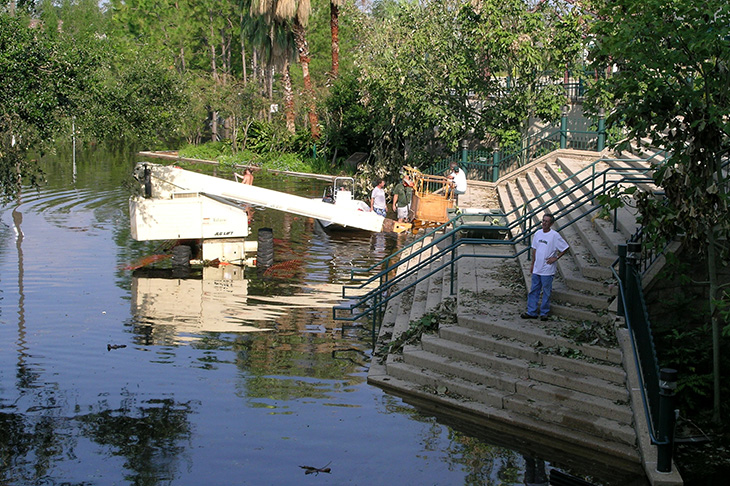Website, exhibit tell the story of "Katrina & Beyond"


After Hurricane Katrina hit New Orleans on Aug. 29, 2005, Tony Lorino, senior vice president for operations and chief financial officer, surveys the uptown campus from the steps of the Reily Student Recreational Center, which served as central command for key personnel who sheltered in place. The “Katrina & Beyond” website will continue to grow over the next few months as new content is produced. All the materials that are online and in an exhibit opening on Aug. 20 will be archived in the Tulane University Archives. (Photo from Louis Mayer)
As the city of New Orleans makes plans to commemorate the 10 years that have passed since historic Hurricane Katrina, Tulane University has launched a new website, “Katrina & Beyond.” Plans are under way for the university to mount a major exhibit of the same name, which will go on display Aug. 20 on the university"s uptown campus.
The website and exhibit chronicle the university"s role in an “undeniable renaissance” in New Orleans, says Kathryn Hobgood Ray, assistant director of web communications. She spearheaded development of the website that “chronicles events of Hurricane Katrina one of the most challenging moments in the history of Tulane University and New Orleans.”
Hobgood adds, “It"s a story that needs to be told again and again. Viewers will feel incredibly uplifted by all we"ve achieved since Hurricane Katrina.”
The website, which will be continually updated, contains a Katrina timeline, stories of the leaders who saw Tulane University through the crisis, videos, personal memories, special events that are being planned, and an experts sourcebook for news media.
In the fall of 2005, with the uptown campus closed after the storm, around 13,000 Tulane students continued their studies at over 600 universities around the country. The website contains a map showing the locations, as a thank you to those who helped Tulane students in the aftermath of the storm.
A section called “Beyond Katrina” shows the facilities that have been built at Tulane since Hurricane Katrina and highlights priority issues as the university continues its forward momentum.
Hobgood plans for the site to be interactive, so members of the Tulane community can contribute additional Katrina memories.
“We"ll never forget Katrina. The legacy of the storm has turned us into a different, better institution, more connected with our beloved city,” says Hobgood, who was part of the Tulane hurricane response team during the crisis in 2005.
“We'll never forget Katrina. The legacy of the storm has turned us into a different, better institution, more connected with our beloved city.”—Kathryn Hobgood Ray, assistant director of web communications
